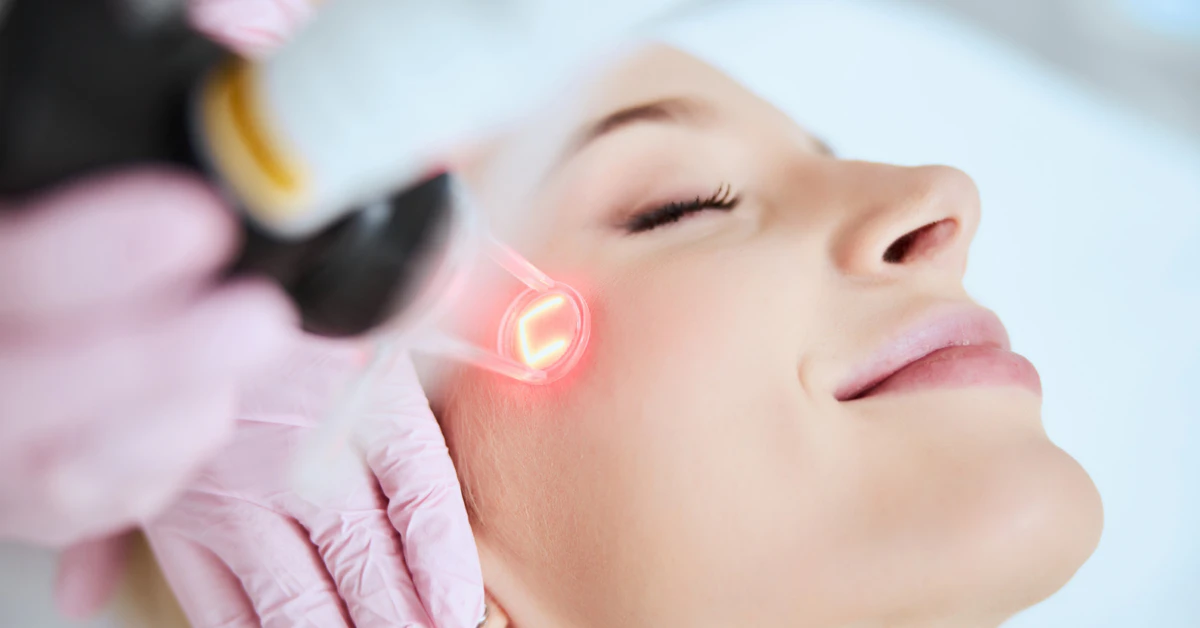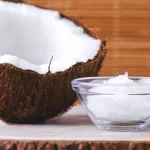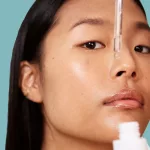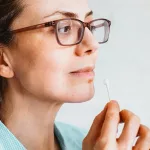You ever catch yourself in the mirror, tilting your head, squinting at that stubborn patch on your forehead? Maybe it started as a freckle after a beach day gone wild, or it’s the aftermath of that angry pimple you couldn’t resist picking. Whatever the origin story, these dark spots have a way of stealing your attention—and sometimes, your confidence.
If you’ve spent a small fortune on serums, creams, and “miracle” potions only to end up with the same old blotches, you’re not alone. I remember feeling hopeless when nothing seemed to make a dent in my melasma patches. Enter: laser treatment for dark spots. It sounds a bit sci-fi, right? Light beams blasting away pigment as if you’re in a futuristic movie. But rest assured, it’s a well-established dermatology staple—and yes, it can work wonders.
In this deep-dive guide, we’ll talk laser physics (the easy way), peel back the science, weigh the pros and cons, and share real-life tales from folks who went under the beam—and lived to tell the tale. By the end, you’ll have everything you need to decide if laser for dark spots is your ticket to clearer, more confident skin. Ready? Let’s chat.
What Is Laser Treatment for Dark Spots?
At its core, laser treatment is pretty simple: concentrated light energy targets excess melanin in your skin. Think of melanin as the pigment that gives your skin its color; when it clusters, you get those pesky dark spots—sun spots, age spots, post-inflammatory marks, and melasma included. The laser’s light is drawn to the melanin like a magnet. Once absorbed, it shatters the pigment into tiny bits. Your body’s natural cleanup crew—AKA your immune system—then sweeps away the debris, leaving a more even canvas behind.
Here’s a quick breakdown of why lasers beat most topical fixes:
- Precision targeting: A laser can zero in on specific spots without affecting healthy surrounding tissue.
- Speed: Each pulse takes mere nanoseconds, so the total session often lasts under 30 minutes for a full face.
- Minimal downtime: Depending on the laser, you might experience redness or mild swelling for a day or two—like a brief sunburn.
Common Laser Types
| Laser Type | Best For | Downtime |
|---|---|---|
| Q-Switched | Freckles, sun spots, post-acne marks | 1–3 days of mild redness |
| Pico | Fine pigmentation, melasma | 1 day of mild swelling |
| Nd:YAG | Darker skin tones, deep pigment | 2–4 days; possible temporary darkening |
| Fractional Resurfacing | Texture smoothing, deep spots | 3–5 days; gentle flaking |
Benefits vs. Risks of Laser for Dark Spots
Treating your skin with lasers can feel like a leap of faith. So let’s weigh the good, the cautionary, and the “prepare yourself” before you book that first appointment.
The Perks
- Visible improvement: Many people see significant fading of dark spots after just 2–3 sessions.
- Texture boost: Fractional lasers stimulate collagen, smoothing fine lines and minor scarring.
- Confidence lift: Feeling good in your skin is priceless—and lasers often deliver that “wow” moment.
Potential Downside
- Temporary redness/swelling: Your face might look like a mild sunburn for 1–4 days.
- Risk of pigment changes: If settings aren’t customized, you could see hyperpigmentation (spots get darker) or hypopigmentation (spots turn lighter than your skin tone).
- Multiple treatments needed: Budget time and money—each session can run between $200 and $800, depending on your locale and the laser used.
Is It Safe for All Skin Tones?
Darker skin tones have more melanin, which can inadvertently absorb more laser energy, raising the risk of complications if not managed correctly. But fear not—lasers like Nd:YAG and Pico are designed with wavelength settings that bypass excess melanin and target deeper pigment safely. The key is picking a provider experienced with melanin-rich skin. Always ask to see before-and-after photos of patients who look like you, and ensure a small test patch is performed first.
Laser Treatment on Melanin-Rich Skin: What You Should Know
If your skin leans medium to deep in tone, you’ve got more to consider than lighter-skinned friends. Let’s break it down so you walk in armed with knowledge, not anxiety.
Why Tone Matters
Your skin’s melanin level affects how it absorbs and reflects light. Too much absorption at the surface can backfire, causing darker patches where you least want them. That’s why you need a laser pro who understands how melanin behaves under different wavelengths.
Best Practices for Darker Skin
- Pick the right laser: Nd:YAG (1064 nm) and Pico lasers are often the top picks for Black and brown skin tones.
- Patch test: A small trial spot on your jawline or shoulder can reveal how your skin will react.
- Experienced provider: Seek dermatologists or laser technicians with extensive portfolios of patients with similar skin tones.
- Meticulous aftercare: Every practitioner will stress sun protection—think broad-spectrum SPF 30+—and gentle, hydrating skincare to support healing.
Personal Anecdote
I spoke with Jamila, 34, who lives in Miami and has rich brown skin. She tried two Q-switched sessions that left her spots oddly darker. Feeling discouraged, she switched to a Pico specialist who tweaked the energy settings, and by session three, her melasma patches were visibly lighter. Her takeaway? “Don’t blame yourself—find the right machine and the right hands.”
Alternatives to Laser: What Else Works?
Not ready for a laser zap? That’s okay. There are plenty of other ways to tackle dark spots—some gentler, some more gradual, all worth considering.
Chemical Peels
C hemical peels use acids—glycolic, salicylic, and trichloroacetic (TCA)—to dissolve the outer layer of skin, where most superficial pigmentation hangs out. Light peels might leave you flaking for 3–5 days; medium-depth peels can require up to a week of downtime. According to a study on chemical peel for melasma, medium-depth peels showed a 60% improvement in pigmentation after three sessions according to research.
Topical Treatments
- Hydroquinone: Often called the gold standard for spot-lightening. Prescription-strength formulations can be highly effective but require monitoring by a dermatologist.
- Vitamin C: A potent antioxidant that brightens and protects against environmental damage.
- Retinoids: From tretinoin to over-the-counter retinol, these speed up cell turnover, gradually fading spots over weeks to months.
- Azelaic Acid: Gentle on sensitive or acne-prone skin, with anti-inflammatory benefits as well.
Lifestyle & Daily Habits
Even the best treatments falter without solid skincare habits. First: sunscreen. Broad-spectrum SPF 30 or higher, applied every morning and re-applied midday if you’re out and about. Second: gentle exfoliation. A chemical exfoliant like 10% glycolic acid or lactic acid, used 1–2 times a week, helps slough away dull surface cells. Third: hydration. A good moisturizer with ceramides or hyaluronic acid fortifies your skin barrier, keeping it resilient.
Skincare Products for Dark Skin
Finding products that address hyperpigmentation without triggering irritation can feel like searching for a mythical unicorn. Here are some crowd-pleasers:
- Buttah Skin Fade Body Serum: Tailored for melanin-rich skin, packed with licorice root extract and vitamin C.
- Black Opal Even True CC Cream SPF 50: Color-correcting coverage plus sun protection in one.
- The Ordinary Azelaic Acid Suspension 10%: Brightening and anti-inflammatory, all under $10.
- Paula’s Choice 10% AHA Gel Exfoliant: Gentle glycolic formula to refresh and reveal.
Remember to patch-test any new product, especially if your skin tends toward sensitivity or breakouts.
Real Results: Before and After Laser Treatments
Sometimes you’ve got to see it to believe it. Scanning Instagram hashtags like #DarkSpotRemovalLaser, you’ll find transformations that look almost too good to be true: sun spots fading into almost imperceptible whispers, age spots that once sat proudly on foreheads now virtually gone. One user, @skin.by.lara, shared side-by-sides after her third Pico session—her freckles went from dark chocolate to a soft latte tone.
Of course, every journey differs. Some folks need four to six sessions spaced 4–6 weeks apart. Others pair laser with a gentle chemical peel or a hydroquinone cream to accelerate results. The takeaway? Consistency and professional guidance are your best friends.
Choosing the Right Treatment for You
With so many options, how do you pick your path? Start by asking yourself (and your prospective provider) these questions:
- What type of pigmentation am I dealing with? Sun spots respond faster than melasma, which can be stubborn.
- What’s my budget? Remember, results build over sessions—factor in at least three treatments.
- How much downtime can I handle? Fractional resurfacing means more downtime than a quick Q-switched zap.
- Who’s performing the laser? Credentials matter. Board-certified dermatologists or certified laser technicians with portfolios of similar skin tones are ideal.
Schedule consultations with at least two providers. Compare their approaches, equipment, and before-and-after photos. Trust your gut: if someone rushes you or dismisses your concerns, keep looking.
For a detailed breakdown of session costs and what impacts pricing, check out this article BBL Laser Treatment Cost Guide.
Conclusion
Opting for laser for dark spots is a personal decision—one that can transform not just your skin, but your confidence. You now know the science behind the beams, the types of lasers available, and how to navigate the pros and cons with your skin tone in mind. Whether you dive into a Pico session, pair a chemical peel for melasma with your topical treatments, or embrace a gradual approach with serums and SPF, the power to restore your skin’s evenness is within reach.
So, what’s your next move? Will you book that laser consultation, try a new brightening cream, or finally commit to daily sunscreen? Share your thoughts and experiences in the comments below—or drop your questions if you’re still undecided. We’re in this together, friend. Here’s to brighter days (and brighter skin) ahead!


















Leave a Reply
You must be logged in to post a comment.